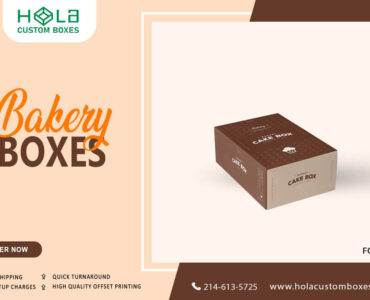To differentiate themselves in the current competitive market environment, packaging has emerged as a fundamental strategy for organisations. Custom Packaging improves consumer experience, brand identity, and market position. The approach surpasses its functional purpose by aiming to generate an exceptional and memorable unboxing experience. Thus, this establishes a more profound connection with consumers. At its core, it entails the conception and manufacture of packaging solutions that are precisely customised needs, preferences, and values of a particular brand. This may comprise trademark elements such as logos, slogans, and imagery. In addition to selecting materials, colours, shapes, and sizes, they remain valuable. So, it provides prospects for ingenuity and advancement.
Custom Packaging and the Effective Approach for Arrangement
Businesses can create packaging that safeguards their products and effectively conveys their brand narrative and core principles by personalise arrangements. Establishing brand recognition and cultivating consumer loyalty is more critical than ever in the competitive marketplace because of Custom Packaging. This feature enables organisations the brand to identify each option, establishing a consistent brand encounter throughout all contact points. By employing distinctive colour schemes, visually appealing designs, and one-of-a-kind structural components, brands can differentiate themselves and establish an enduring connection with consumers. Additionally, it allows organisations to accommodate particular product specifications and market dynamics.
Maintain Product Recyclability because of Custom Packaging
In contrast to prefabricated packaging options, which might fail to satisfy the specific requirements of a product and intended market, customised precisely accommodates the shape, dimensions, and fragility of the items being wrapped. This feature improves the safeguarding of products while in transit and enhances the unboxing experience for customers, making Custom Packaging more streamlined and gratifying. Besides bolstering brand identity and safeguarding products, it may also assume a pivotal function in initiatives about sustainability. This enables enterprises to investigate environmentally friendly materials, including compostable alternatives, recycled cardboard, and biodegradable polymers, without sacrificing their visual appeal and practicality. It has transcended its traditional purpose of simple product protection and become a crucial tool for organisations across a wide range of industries.
Custom Packaging Will Endure Scope to Adopt Personalisation
Businesses can demonstrate their dedication to corporate social responsibility and attract environmentally conscious consumers. They do this by placing sustainability as a primary consideration in Custom Packaging decisions—the scope for customisation limitless, encompassing intricate designs, embellishments, interactive components, and personalisation. Organisations can utilise the platform to construct narratives, employing tactile and visual components. They do this to captivate clientele and establish sentimental bonds with their brand. It enables brands to generate interest in their products. Furthermore, they also entertain consumers through themed collections and limited-edition holiday packaging that mirrors current trends. The increasing prominence of electronic commerce has emphasise perfectly within the contemporary retail environment.
Repeat Historic Product Needs by Having Candle Packaging
The packaging functions as an entranceway to the mesmerising aromas and mesmerising. The objective is not simply to enclose a product but to create an experience that begins the instant a customer sees it. The function of Candle Packaging is of utmost importance as it attracts attention, communicates brand identity, and guarantees their security while in transit. In this domain, each element, ranging from the choice of materials to the aesthetics of the design, contributes to the overall appeal. Materials are of tremendous importance in it. Achieving a harmonious coexistence among aesthetics, sustainability, and functionality is imperative. Throughout history, cardboard and paper have been the preferred materials due to their adaptability and ecological sustainability.
Candle Packaging Helps in Safe Shifting with Innovation
Although these materials may not conform to the preferences of environmentally conscious consumers, they contribute a distinctive element to the product, thereby augmenting its perceived value. Its design is the environment in which innovation thrives. Each option like illustrations, intricate patterns, and minimalist designs—reflects the essence of the candle it encases. The function of typography is crucial, as it communicates an array of emotions, from sophistication to whimsy. In addition, embellishments such as spot UV, foiling, and embossing enhance the visual and tactile aspects. This transforms Candle Packaging from ordinary to extraordinary. Practical considerations such as size and shape take precedence over aesthetics. In addition to securely fitting the candle, it must offer sufficient protection against deformation and breakage while in transit.
Candle Packaging – The Addition to Useful Product Opening
Strict attention to detail is required throughout the structural design phase to guarantee that the packaging possesses utilitarian qualities and aesthetic appeal. Candle Packaging is the platform for brands to convey their narrative and aesthetic. The sensory encounter commences with the initial contact with the packaging. The aroma emanating from their opening, the texture of the material, and the sound of unravelling all contribute to establishing its ambience. Brands frequently exploit this phenomenon by integrating delicate aroma components into the packaging. Hence, it evokes a multisensory encounter that stimulates the senses. The packaging is an implicit representative of the brand, communicating its principles and values to the consumer.





[…] their products stand out on crowded shelves and draw customers in. As a result, new materials and creative design aspects like 3D printing, embossing, and interactive parts have become popular. Brands can produce […]